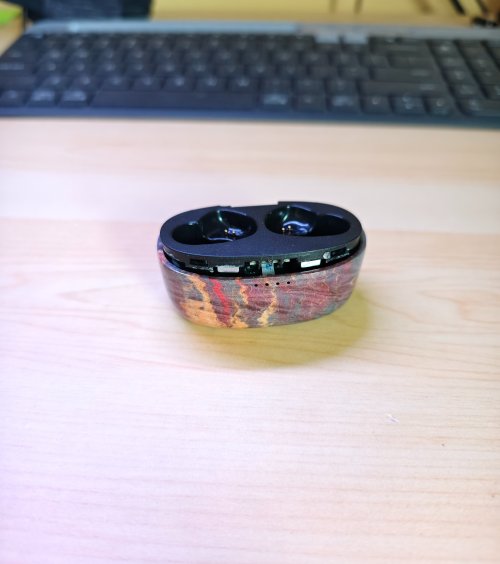SBC vs AptX tests:
Many note low sound quality and lack of high frequencies when using the standard SBC Bluetooth codec, which is supported by all headphones and other Bluetooth devices. A common recommendation to get better sound quality is to buy devices and headphones with aptX or LDAC codecs supported. These codecs require licensing fees, so devices with them are more expensive.
It turns out that the low quality of SBC is caused by artificial limitations of all current Bluetooth stacks and headphones' configuration, and this limitation can be circumvented on any existing devices.
Everyone interested in Bluetooth audio, please take part in high-bitrate SBC compatibility testing on various headphones, receivers, stereo systems, or automotive head units.
If the vast majority of devices work with high bitrates, I will make a patch for Android and send it to AOSP and third-party ROMs, and high quality Bluetooth audio will be available to everyone on any headphones and smartphones, regardless of codecs with licensing fees.
Short technical information about SBC codec
A2DP specification v1.2, which was active from 2007 to 2015, requires all decoders to work correctly with bitrates up to 512 kbps:
In the new version of the specification there is no bitrate limitation. It is assumed that modern headphones released after 2015 with EDR can support bitrates up to 730 kbps.
For some reason, all currently tested Bluetooth stacks (Linux (PulseAudio), Android, Blackberry and macOS) have artificial restrictions of maximum bitpool parameter, which directly affects the maximum bitrate. But this is not the biggest problem, almost all headphones also limit the maximum bitpool value to 53.
As I've already seen in my tests, most devices work fine on a modified Bluetooth stack with a bitrate of 507 kbps, without interrupts and crackling. But such a bitrate will never be negotiated under normal conditions, with stock Bluetooth stacks.
How to test on a PC
High bitrate SBC headphone compatibility test is the easiest to perform on the PC with a Bluetooth adapter. I've prepared Ubuntu image with a modified Bluetooth stack, which can be run as in a virtual machine (by connecting Bluetooth adapter as a USB device inside the virtual machine, it also works with the adapters built into the laptops) or by booting from the USB flash drive. This image uses the following profile: Dual Channel, 8 bands, 16 blocks, Loudness, bitpool 2..41, 44.1 kHz, which provides 485 kbps bitrate.
Why this is important: SBC 328k and 485k vs aptX
Contrary to popular belief of aptX sound quality, in some cases it can produce worse audio quality than SBC with a standard 328k bitrate.
SBC dynamically allocates quantization bits for frequency bands, acting on a "bottom-to-top" basis. If the whole bitrate was used for the lower and middle frequencies, the upper frequencies are "cut off" (silenced).
aptX quantizes frequency bands with the same number of bits constantly, which makes it a constant bitrate codec: 352 kbps for 44.1 kHz, 384 kbps for 48 kHz. It can't "transfer bits" to frequencies that are mostly needed in them. Unlike SBC, aptX will not "cut" frequencies, but will add quantization noise to them, reducing the dynamic range of audio, and sometimes introducing crackles. SBC, on the contrary, "eats the details" - discards the quietest areas.
On average, compared to SBC 328k, aptX makes less distortion in music with a wide frequency range, but on music with a narrow frequency range and a wide dynamic range SBC 328k sometimes wins.
Let us consider a special case, a piano recording. Here's a spectrogram:

The most energy lies in the 0-4 kHz frequencies, and lasts up to 10 kHz.
The spectrogram of the file aptX file looks like this:

Here is SBC 328k:

It can be seen that the SBC 328k periodically completely cut off the range above 16 kHz, and used all available bitrates for ranges below this value. However, aptX introduced more distortions into the frequency spectrum audible by the human ear, which can be seen on the subtracted original spectrogram from the aptX spectrogram (the brighter, the more distortion):

While the SBC 328k has introduced less distortion the signal in the range from 0 to 10 kHz, and the rest has been сut:

Bitrate 485k for SBC was enough to save the entire frequency range, without cutting off the bands.

SBC 485k on this audio sample is much better than aptX in the range of 0-15 kHz, and with a smaller but still noticeable difference - at 15-22 kHz (the darker, the less distortion):

Switching to a high-bitrate SBC, you will get a sound superior to aptX most of the time, on any headphones.
Full post:
https://forum.xda-developers.com/t/...y-on-headphones-without-aptx-or-ldac.3832615/































